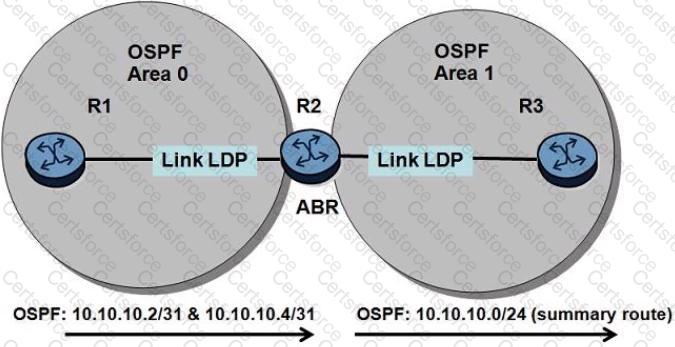Which of the following describes how a router sets the destination IP address for an RSVP RESV message?
Which of the following are the default settings for the Alcatel-Lucent 7750 SR when using LDP?
In MPLS, how is the label range 0 ?15 used?
Which one of the following statements regarding RSVP LSP configuration is true?
Which one of the following statements regarding the detour object transported in the detour path message is true?
Which of the following statements regarding per-platform label space are true? Choose two answers.
An Alcatel-Lucent 7750 SR enabled with LDP has multiple equal cost paths to a given FEC. After ECMP is enabled, which of the following is FALSE?
Which of the following is a primary cause of IP hyper-aggregation?
What MPLS function should be performed by a router that receives a data packet containing an MPLS label value of 3?
Click on the exhibit.

Router R2 advertises an OSPF summary route 10.10.10.0/24 into Area 1. Router R3 receives labels for individual FECs 10.10.10.2/32 and 10.10.10.4/32. These two FECs are installed in router R3's LIB but not in the LFIB. What needs to be done on router R3 to install these labels into its LFIB?